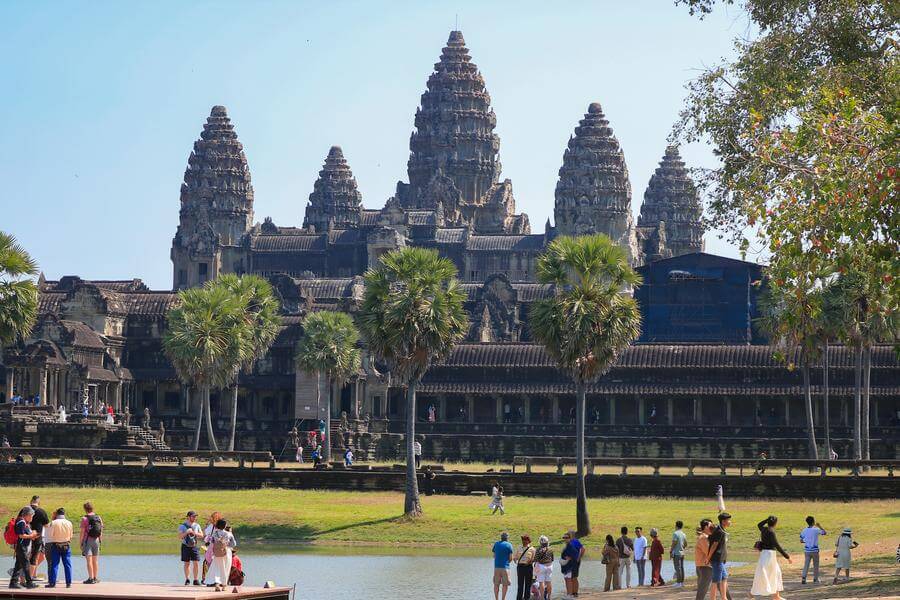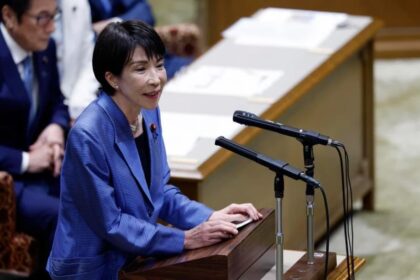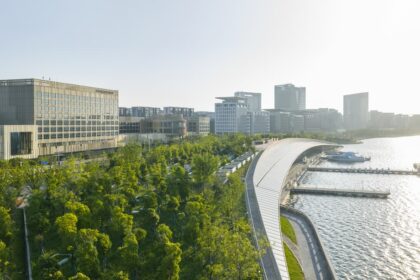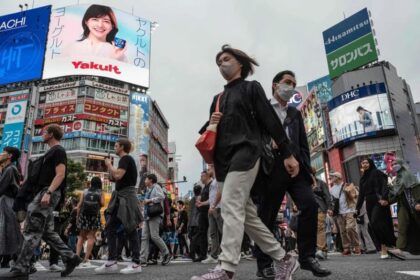Angkor Archaeological Park’s Tourism Revival: 2025 in Focus
Cambodia’s Angkor Archaeological Park, a UNESCO World Heritage Site and one of Southeast Asia’s most iconic cultural destinations, is experiencing a robust resurgence in international tourism in 2025. After years of pandemic-induced downturn, the first half of the year has brought a significant uptick in both visitor numbers and revenue, signaling renewed global interest in the ancient Khmer temples and the broader Cambodian tourism sector.
- Angkor Archaeological Park’s Tourism Revival: 2025 in Focus
- What’s Driving the Growth in International Visitors?
- Who Is Visiting Angkor in 2025?
- Ticket Pricing and Revenue Streams
- Comparing to Pre-Pandemic Highs: Is Full Recovery in Sight?
- Economic Impact: Tourism’s Role in Cambodia’s Recovery
- Challenges and Opportunities Ahead
- Angkor’s Enduring Appeal: Why Do Tourists Keep Coming?
- In Summary
According to official data from Angkor Enterprise, the public administrative body overseeing ticket sales, the park welcomed 567,673 international tourists from January to June 2025. This marks an 8.76% increase compared to the same period in 2024. Revenue from ticket sales reached $26.3 million, up 8% year-on-year, underscoring the growing momentum of Cambodia’s tourism recovery.
What’s Driving the Growth in International Visitors?
The resurgence in Angkor’s tourism is the result of a multi-faceted strategy involving government agencies, private sector partners, and international collaborations. Several key factors have contributed to this positive trend:
- Modernized Ticketing and Entry Systems: In early 2025, Angkor Enterprise introduced automated kiosks, mobile apps, and online platforms for ticket purchases. This digital-first approach has streamlined the process for both independent travelers and tour operators, reducing queues and improving the overall visitor experience.
- Enhanced Border Control: The rollout of the electronic Visitor Pass (v-Pass) in mid-2025 has replaced traditional entry stamps and QR stickers. Tourists can now complete immigration procedures in advance via the Cambodia e-Arrival platform or mobile app, significantly reducing wait times at airports and land borders.
- Improved Infrastructure: Upgrades to airport capacity, road networks, and the introduction of contactless payment systems have made travel within Cambodia more efficient and accessible. Multilingual support and smartphone-friendly tools further assist international guests.
- Targeted Marketing and International Campaigns: The Cambodian government and tourism authorities have ramped up promotional efforts, particularly in anticipation of the upcoming “Visit Cambodia Year 2026.” Special campaigns, such as the Cambodia-China Tourism Year 2025, have also played a role in attracting specific markets.
Chhay Sivlin, President of the Cambodia Association of Travel Agents, highlights the collaborative nature of this success:
“This growth is a good sign and results in a strong partnership between the government, various ministries, and the private sector, all working to boost tourism promotion.”
Who Is Visiting Angkor in 2025?
While Cambodia’s proximity to Thailand and Vietnam ensures a steady flow of regional tourists, the majority of international visitors to Angkor in 2025 hail from long-haul markets. The United States, United Kingdom, and France are the top three source countries, followed by China, Japan, South Korea, and Canada. Notably, Chinese tourist arrivals have surged by 25% in the first half of 2025, with 47,571 visitors, reflecting the impact of the Cambodia-China Tourism Year and improved direct flight connectivity.
Thong Mengdavid, a lecturer at the Institute for International Studies and Public Policy of the Royal University of Phnom Penh, explains the significance of this trend:
“With 2025 being named the Cambodia-China Tourism Year, we can anticipate a notable surge in Chinese tourist arrivals to the Angkor Archaeological Park. This increase will likely be driven by enhanced bilateral cooperation, promotional campaigns, and greater accessibility through direct flights and group tour packages.”
Despite the closure of the Cambodia-Thailand border earlier in the year, tourism experts assert that this has had minimal impact on Angkor’s ticket sales, as Thai nationals do not constitute the majority of visitors to the park.
Ticket Pricing and Revenue Streams
Angkor Enterprise offers three main ticket options for international visitors:
- $37 for a single-day pass
- $62 for a three-day pass
- $72 for a seven-day pass
These flexible options cater to a range of travel preferences, from day-trippers to in-depth explorers. The modernized ticketing system, including self-service vending machines at key locations, has made it easier for tourists to purchase passes and access the park’s 91 ancient temples.
In addition to Angkor Park, Angkor Enterprise manages ticket sales for other heritage sites in Siem Reap province. In the first half of 2025, these sites generated the following revenues:
- Koh Ker Temple: $181,140
- Beng Mealea Temple: $81,990
- Phnom Kbal Spean: $3,220
- Chong Kneas Port: $1,216,716
While Angkor remains the primary draw, these additional sites contribute to the diversification of Cambodia’s tourism offerings and revenue base.
Comparing to Pre-Pandemic Highs: Is Full Recovery in Sight?
The current figures, while impressive, still fall short of the record-breaking pre-pandemic levels. In the first half of 2018, Angkor Archaeological Park welcomed 1,356,961 international visitors and generated $61.47 million in ticket sales. The pandemic years (2020-2023) saw a near-total collapse in international arrivals, with gradual recovery only beginning in late 2023 and accelerating through 2024 and 2025.
Khiev Thy, president of the Angkor Tour Guide Association, remains optimistic:
“Even though AE’s revenue increased only slightly in the first half of this year, it is still a positive sign after the near-total collapse of tourism during the Covid-19 pandemic. We are optimistic that in the upcoming high season, Cambodia will see many more international tourists.”
Tourism officials and industry stakeholders expect further growth in the second half of 2025, especially as the high season approaches and international flight availability continues to improve.
Economic Impact: Tourism’s Role in Cambodia’s Recovery
Tourism is a vital pillar of Cambodia’s economy. In 2024, the country welcomed 6.7 million international tourists, generating nearly $3.64 billion in revenue and contributing approximately 9.4% to the national GDP. For 2025, the Ministry of Tourism forecasts around 7.5 million international arrivals and over $5 billion in economic impact.
The strong performance of Angkor Archaeological Park is both a driver and a barometer of this broader recovery. The park’s success demonstrates the effectiveness of Cambodia’s tourism management, infrastructure investments, and international marketing efforts.
Local businesses, from hotels and restaurants to tour operators and artisans, benefit directly from the influx of foreign visitors. The ripple effects extend to job creation, community development, and the preservation of cultural heritage.
Challenges and Opportunities Ahead
Despite the positive trends, several challenges remain on the path to full recovery and sustainable growth:
- Global Uncertainties: Geopolitical tensions, economic fluctuations, and public health concerns can all impact international travel demand. Industry experts caution that future growth is not guaranteed and depends on stable global conditions.
- Seasonal Fluctuations: Visitor numbers typically dip during the low season (May to August), with a rebound expected as the high season begins in late August and continues through early April.
- Balancing Growth and Conservation: As visitor numbers rise, managing the impact on Angkor’s fragile monuments and surrounding environment becomes increasingly important. Sustainable tourism practices and responsible visitor management are essential to preserving the site for future generations.
To address these challenges, the Cambodian government and private sector are intensifying international promotional efforts, investing in staff training, and developing new tourism products that highlight the country’s rich cultural and natural assets beyond Angkor.
Angkor’s Enduring Appeal: Why Do Tourists Keep Coming?
Angkor Archaeological Park’s allure lies in its unique blend of history, spirituality, and architectural grandeur. The 401-square-kilometer site, located in Siem Reap province, is home to 91 temples built between the 9th and 13th centuries, including the world-renowned Angkor Wat. Since its inscription as a UNESCO World Heritage Site in 1992, Angkor has drawn millions of visitors seeking to experience the zenith of Khmer Empire craftsmanship and spiritual devotion.
Modern travelers are also attracted by the immersive experiences now available, from guided heritage walks and sunrise tours to cultural performances and culinary adventures. The integration of digital tools, contactless payments, and multilingual support has made the site more accessible and enjoyable for a diverse global audience.
As Cambodia prepares for “Visit Cambodia Year 2026,” Angkor’s strong performance in 2025 serves as a case study in effective heritage tourism management and a testament to the country’s resilience and adaptability.
In Summary
- Angkor Archaeological Park welcomed 567,673 international tourists in the first half of 2025, up 8.76% year-on-year.
- Ticket sales generated $26.3 million in revenue, reflecting an 8% increase over 2024.
- Growth is driven by modernized ticketing, improved infrastructure, targeted marketing, and enhanced border procedures.
- The United States, United Kingdom, France, and China are the top source countries, with Chinese arrivals up 25% in H1 2025.
- While still below pre-pandemic highs, the recovery is robust and expected to accelerate in the high season.
- Tourism remains a key economic driver for Cambodia, supporting jobs, businesses, and heritage preservation.
- Challenges include global uncertainties, seasonal fluctuations, and the need for sustainable visitor management.
- Angkor’s enduring appeal and ongoing innovations position it as a leading destination for cultural and heritage tourism in Southeast Asia.












